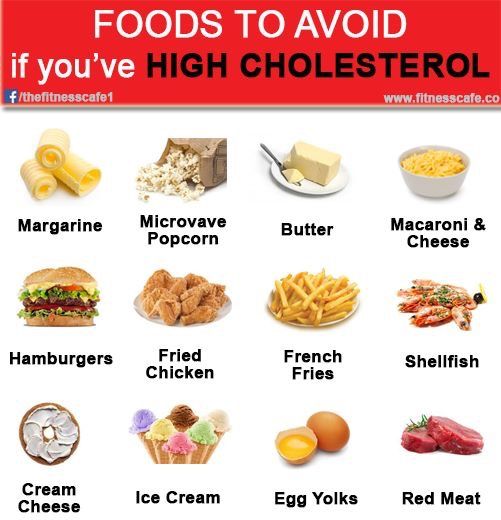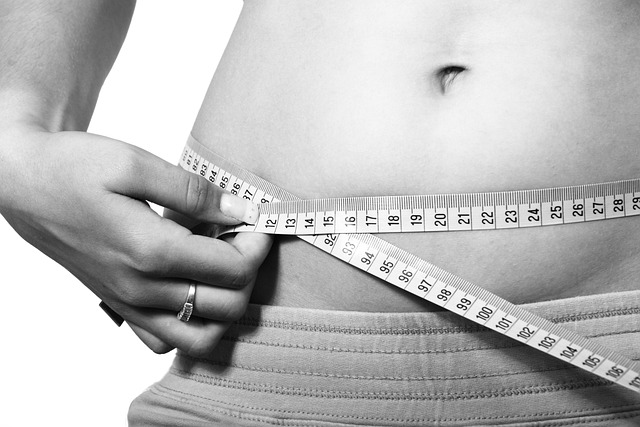
Did you know that skiing can burn more calories than other types? This article will explore the differences between downhill and cross-country skiing and how the physical demands of each differ. Off-piste skiing is another type that can increase your calorie burn. This activity is much more challenging than traditional skiing, so you can expect to burn more calories during this type of exercise. For tips on how you can make your skiing workout more enjoyable, consider starting skiing.
Skiing uphill burns more calories
Skiing is best done uphill than downhill. But, there are many factors that can affect how you lose calories while skiing. Understanding these factors can help you maximize your training and make the most of your skiing experience. Here are some of the important factors to consider:
Generally, a standard cross-country skier can burn up to 550 calories per hour. The most intense form of skiing, known as skate skiing, can burn up to 1,100 calories per hour. For those who prefer a more vigorous form of skiing, a Nordic skier can burn the same amount of calories as a standard skier. Nordic skiing involves climbing up steep hills. Nordic skiing burns approximately the same amount as running. Make sure you have moderate calories in daily meals.

Skiing downhill burns more calories
Skiing's calories burnt depend on many factors. They can also vary from person to person. Because downhill skiing involves both aerobic and anaerobic exercise, it is one of the most efficient winter sports for calorie reduction. Harvard Medical School's research has shown that a person with a body weight of around 155 pounds can burn around 532 calories during an hour of downhill ski. The number of calories burned during this activity is directly proportional to body weight, so skiers who are overweight should take note of their diet when planning their skiing schedule.
Experts recommend that beginners spend at least an hour on the slopes before they decide to take up downhill skiing. Skiers should be able to make dynamic turns that strengthen their core muscles as well as increase their flexibility. To gain momentum while climbing the mountain, skiers should also use poles. Although beginners burn less calories per hour than those who are more skilled, they will still burn more calories overall. Consider a downhill ski-specific fitness program to maximize the benefits of your downhill skiing sessions.
Cross-country skiing burns more calories that downhill skiing
If you're looking to burn more calories while you're skiing, cross-country skiing is the way to go. A cross-country skier who is experienced can burn as many as 500 calories an hours for a 150-pounder. Cross-country skiing will require you to push yourself to the limit, while downhill skiing can push your core to its limits. However, you'll burn a lot more calories in a shorter time because you have to keep moving forward.
Harvard Health Publications reports that cross-country skiers burn around 1,000 calories per hour. This compares to downhill skiing's roughly 1,000 calories. Skiing can also be done on snowshoes. The difficulty level will determine how many calories the average person burns per hour. The CPA does not provide estimates for freestyle snowboarding.

Off-piste skiing can be more strenuous.
Off-piste Skiing requires more technical skill and more confidence when adapting to mountain conditions. Skiing off-piste requires a wide range of techniques. These include short turns and controlling speed within narrow corridors. Practice on easy terrain first, then progress to steeper slopes, where you can challenge yourself with a harder level of difficulty. Your mental and physical habits of skiing will improve if you challenge yourself. You will be able to turn faster and better.
Off-piste skiing requires specific equipment, like wider skis for powder and stiffer skis for harder snow. The wider skis make it easier to turn in powder. In crusty snow, it's important to understand how to keep your weight evenly distributed on both skis. In hard-pack snow, your weight should be equally distributed on both the skis and you need to remain seated. Similarly, thin snow with protruding rocks requires a slow, deliberate technique. These skills can be developed with proper training.
FAQ
Are there side effects to intermittent fasting
There are no known negative side effects of intermittent fasting. Some minor issues might occur if you do not plan your meals properly.
You might feel irritable if you skip breakfast. Also, you might experience dizziness, headaches, fatigue, muscle cramps, and dizziness.
These symptoms usually resolve within a few weeks.
How long does it take for you to lose weight?
It takes time to lose weight. It takes about six months to lose 10% of your weight.
You should not expect to lose weight overnight. Your body needs time to adjust to new dietary changes.
This means that your diet needs to be slowly changed over several days, or even weeks.
Fad diets should be stopped as they are often not effective. Instead, change your daily routine.
Consider, for instance, that you often eat unhealthy snacks late at the night. You need to reduce this behavior.
You should eat healthier meals in the morning. You'll be able to eat healthier meals earlier in the evening, and you won't snack later at night.
Water is essential for your body. Water keeps you hydrated and prevents your body from becoming dehydrated. Dehydration causes you to feel fatigued and slow.
Therefore, drinking lots of water throughout the day will help you stay energized and focused.
You can reduce stress by relaxing. Spending time with loved one could help you reduce stress.
You could also read books or watch movies, or listen to music.
These activities will help you unwind from stressful situations. They will also improve your mood, self-esteem, and overall well-being.
If you want to lose weight, consider your health first.
Your overall health is directly related to your physical fitness. If you are looking to improve your physical fitness, it is important that you eat well and do regular exercise.
What level of exercise is required to lose weight?
The amount of exercise needed for weight loss depends on several factors, including age, gender, body type, and how much you weigh. Most people need to exercise at least 30 minutes five days a weeks.
The American College of Sports Medicine recommends that you do 150 minutes of moderate intensity aerobic activity per week. This should be spread over three days.
To lose 10 lbs, you should aim to exercise 300 minutes each week. This includes activities such brisk walking and swimming laps, bicycling, dancing, playing tennis or golfing, hiking, running, jogging and other similar activities.
Start out with 20 minutes of vigorous physical activity three times weekly if you're just getting started. That could include activities like lifting weights, sprints, jumping rope, or fast walking.
Aerobic exercise also helps burn calories and build muscle mass. Muscles burn more calories than fat. So building muscle while losing weight may help you achieve your goal faster.
Why lose weight when you are 40 years old?
Maintaining health and fitness is the most important thing for people over 40. It is vital to find healthy ways to stay active throughout your lifetime. This includes regular exercise, eating well, not smoking, and drinking moderate alcohol.
It is also important to understand that as we get older, our bodies change. Our bones start to weaken, and our muscles start to shrink. The best way to slow down the aging process is to take care of ourselves.
There are many benefits to staying healthy and fit as we age. These benefits include:
-
Better sleep
-
Better mood
-
Increased energy
-
Lower risk of cancer
-
A longer life
-
More independence
-
More sex
-
Memory that is better
-
Better concentration
-
Improved circulation
-
Stronger immune system
-
Fewer aches and pains
What can I eat while on intermittent fasting in order to lose weight?
The best way to lose weight is to cut out carbs. That means cutting out bread, pasta, rice, potatoes, and other carbohydrate-based food.
Because it makes you feel fuller, you'll want to limit your intake of protein. This will ensure that you don't feel hungry as frequently.
Focus on foods rich in healthy fats like olive oil, avocado, nuts and seeds. These foods can keep you satisfied for hours after they are eaten.
You should ensure you drink plenty of water. Water is important for your body's ability to stay hydrated and helps you burn more fat.
Sometimes you may feel compelled to eat these foods even if you're not fasting. But that doesn't mean you have to give in to those cravings. If you do, you could gain more weight than you lost.
To prevent overeating, try keeping an eye on how much you consume throughout the day. When hunger strikes, drink a glass of water instead of reaching for another snack.
It might sound counterintuitive at first, but it has been shown that this can help you slim down. A study published online in Obesity revealed that people drank more plain water than they did sugary drinks.
In addition, drinking plain water helped reduce feelings of hunger. You can lose weight by avoiding sweetened drinks and sticking to water.
To lose weight, you don’t have to count calories or restrict certain foods. Instead, you should make small lifestyle changes.
One way to start is by substituting your typical breakfast sandwich with a bowl of oatmeal. Try swapping your afternoon cookie to a piece or fruit.
These easy changes can help you lose weight and keep your kitchen clean.
How do I lose weight
Many people want to lose weight. People want to be healthier and live longer. This is why they are so motivated to lose weight. There are many methods to lose weight and different types of exercise. You can choose from cardio training or strength training. Each exercise has its pros and cons. Walking is the best way to lose calories. Lifting weights is a better choice if you are looking to increase muscle mass. This article will explain how to lose fat and what exercise to do.
When trying to lose weight, the first thing you need to think about is the type of diet plan that you should be following. You don't necessarily need to eat less food; rather, you just need to eat fewer processed foods and avoid junk food. It's recommended to consume at least 2200 calories per day. If you want to lose weight faster, you should reduce your calorie intake even further. This will allow you to shed fat more quickly.
Exercise is a great way to lose weight quickly. Exercise will help you burn calories and boost your metabolism. It is important to combine exercise with healthy eating habits in order to effectively lose weight. You will lose weight by exercising. You will see a faster rate of fat loss if you exercise regularly. Regular exercise can help you live a healthy life. They help you stay active and prevent diseases such heart disease, diabetes, obesity, hypertension, among others.
It is important to get as much exercise as you can. Walking burns approximately 500 calories each hour. A walk of 30 minutes per day can help you to burn approximately 1500 calories. Thus, each week you'll lose 1 pound of body fat. For 10 minutes, you can run or jog. Running burns approximately 1000 calories per hour. Run for 20 minutes every day if you want to lose 5 lbs in three weeks.
Combining exercise with healthy eating habits is the best way lose weight. Find a balance between the two.
Statistics
- One 6-month study showed that simply doing 11 minutes of strength-based exercises 3 times per week resulted in a 7.4% increase in metabolic rate, on average. (healthline.com)
- Another study found that 24 weeks of weight training led to a 9% increase in metabolic rate among men, which equated to burning approximately 140 more calories per day. (healthline.com)
- A 12-week study in 20 women with obesity found that walking for 50–70 minutes 3 times per week reduced body fat and waist circumference by an average of 1.5% and 1.1 inches (2.8 cm), respectively (healthline.com)
- According to a study sponsored by the American Council on Exercise, a person weighing around 140 pounds (64 kg) would burn 108 calories at a 30-minute beginner's Pilates class or 168 calories at an advanced class of the same duration (26). (healthline.com)
External Links
How To
How to lose weight quickly
There are many methods to quickly lose weight. Many people find them ineffective, and even unsustainable. Dieting and exercising are the best ways to lose weight quickly. Consume fewer calories per day than you burn. This means eating fewer calories than what your body burns during normal activities. You must decrease your calorie intake if you want to lose weight quickly.
It is best to avoid foods high in fat or sugar, as these can increase your appetite. Aim to drink plenty water each day. It helps keep you hydrated and keeps your metabolism running at its peak. These three ingredients can be combined to produce faster results than you could ever imagine.